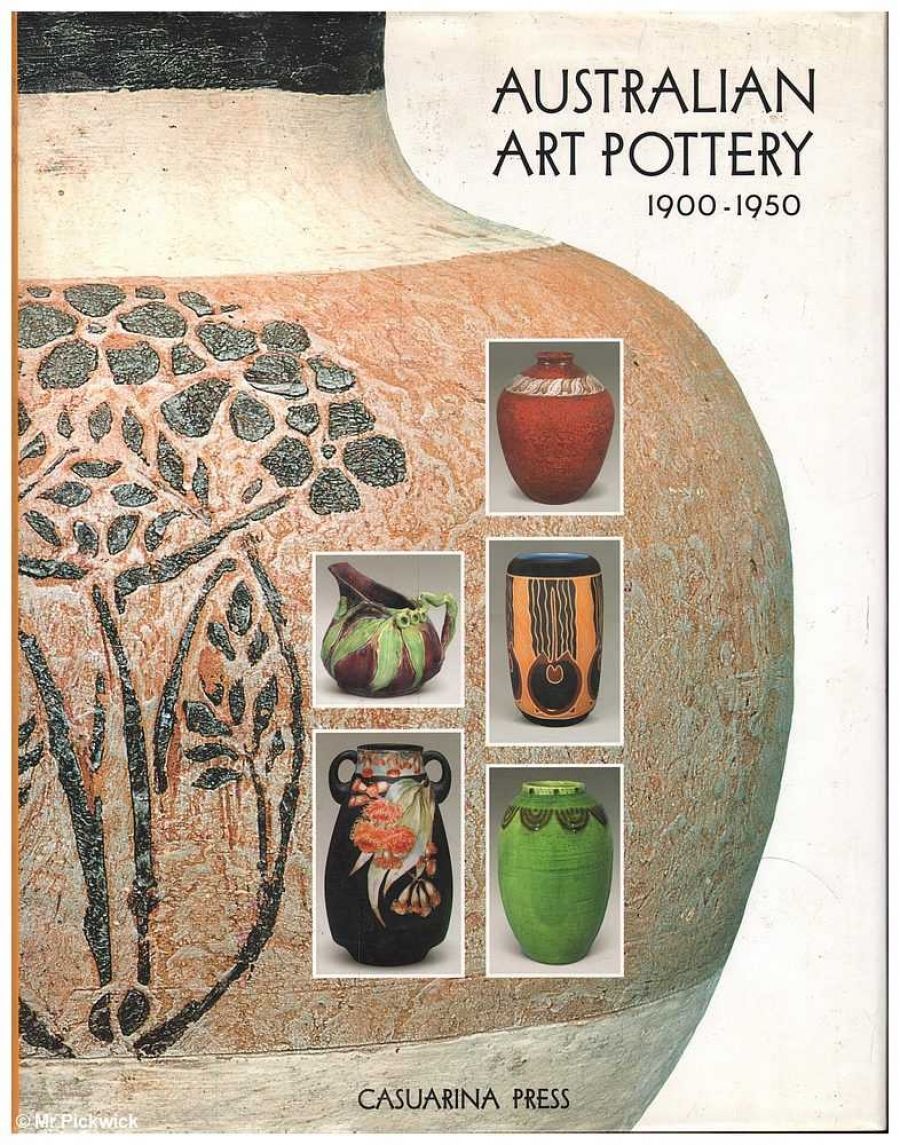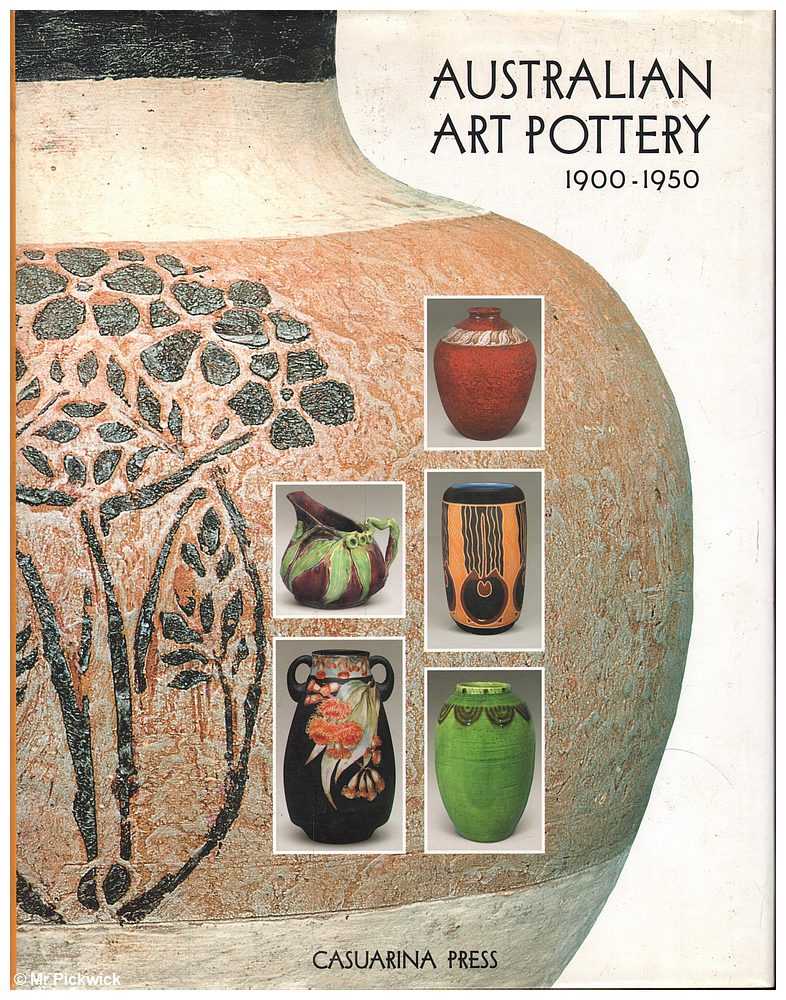
- Free Article: No
- Contents Category: Art
- Review Article: Yes
- Article Title: Pottering Away
- Online Only: No
- Custom Highlight Text:
Specialist historical studies of Australian decorative arts have long been the preserve of the dedicated collector, enthusiast or private historian, rather than the museum curator or university academic. In this aspect, detailed studies of Australian decorative arts have followed the trend in the UK, where many historical studies have been written by private scholars and published by the admirable Antique Collectors’ Club. The pioneering studies of Australian furniture (Clifford Craig and Kevin Fahy, 1972), silver (J.B. Hawkins, 1973), and pottery and glass (Marjorie Graham, 1979 and 1981) presented (in volumes that now seem rather slender) modest information and adequate images gleaned from their authors’ research. The style for such publications changed dramatically in the mid-1980s when big books with masses of images and higher price tags hit the market. Commencing with Kevin Fahy’s Nineteenth Century Australian Furniture in 1985, hefty volumes on Australian silver, furniture, jewellery and pottery have provided invaluable reference books for nineteenth- and early twentieth-century Australian decorative arts. Many of these more recent publications were also co-authored by the industrious Fahy.
- Book 1 Title: Australian Art Pottery
- Book 1 Subtitle: 1900-1950
- Book 1 Biblio: Casuarina Press, $295 hb, 372 pp
- Book 1 Cover Small (400 x 600):

- Book 1 Cover (800 x 1200):

The sumptuously produced and lavishly illustrated Australian Art Pottery 1900-1950 is a welcome development in this mould and builds on the substantial contribution made by Peter Timms in Australian Studio Pottery and China Painting (1986). Intended to be national in scope, Australian Art Pottery has chapters on aspects of ceramics in each state (two chapters for Victoria) written by authorities in the field, including Glenda King, Terence Lane, Glenn R. Cooke and Keith Free, and a section on John Freeland on the use of Aboriginal imagery. This gives a voice to each of the states and permits regional characteristics to emerge, though some may blanch at Dorothy Erickson’s assertion that, in the early days of European settlement of Perth, ‘Western Australian society and its activities mirrored those of rural England of Jane Austen’. Drawing on a larger pool of authors, a good eighty per cent of the book is then devoted to an illustrated biographical dictionary of 118 ceramic artists. Some of the potters are well known – Merrie Boyd, John Perceval, Gladys Reynell – but many are relatively obscure. One omission I find incomprehensible: Margaret Preston. During the 1910s, before she turned to prints and paintings, Preston produced splendid ceramics, which are well represented in public collections. Even though most were produced during an extended stay in Britain, her absence is made more curious by the fact that different authors refer to her work and writings several times in the book.
The dictionary entries are presented with a descriptive text on the potter and his or her work, accompanied by a helpful list of where works are represented in public collections, and bibliographical and exhibition references. The illustrations are generous, with most potters given several images (perhaps too many for some of the minor figures) to show a range of their work. Not all the works illustrated have been selected with equal artistic discrimination, and this does a disservice to some: for instance, Floy Hubble was a much better china painter than the work selected would lead one to expect. Others, however, come off better. Jessie Simpson has only one work illustrated, but a splendid one. The image captions are detailed, with inscriptions, measurements and the collection that owns them. So with all this information, it is a pity that occasional inconsistencies were not picked up. For instance, the entries on Merrie Boyd, John Castle-Harris and Neil Douglas fail to mention that they are represented in the collection of the Art Gallery of South Australia, although the captions for those works of theirs held in the AGSA correctly acknowledge the fact.
The art pottery movement in Australia developed at the beginning of the twentieth century, growing from an amalgam of art pottery sections of commercial potteries and teaching in art schools, the latter heavily influenced by the British Arts and Crafts Movement. The principal material used by most potters in the era was earthenware, with techniques of hand building, wheel throwing and casting. China painting flourished and this often-despised medium is given its due place, at its best showing highly refined design skills. However, there are probably enough cutely modelled Australian animals and sufficient china painting for most tastes. These are dramatically contrasted with the stylish modernism of the ceramics by John Knight, Napier Waller, Anne Dangar and Harold Hughan. Within this company, the work of Hughan, Australia’s first studio potter, is a surprising addition; but, since he commenced potting in 1941, the first decade of his work falls into the scope of the book. His supremely elegant Asian-inspired, Leach-influenced stoneware pots of around 1950 inhabit a different world from the illustrated works, with their emphasis on hand building and representational imagery or conventionalised design.
Australian Art Pottery forms a substantial addition to the literature on Australian ceramics, and is an essential purchase for anyone interested in Australian decorative arts.


Comments powered by CComment